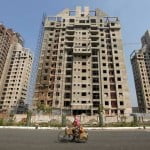
Inflation was expected to cool in February as food prices rose more slowly, a Reuters poll found, which could strengthen calls for more monetary policy easing.
The Reserve Bank of India (RBI) has not changed its key interest rate since cutting by a surprise 50 basis points in September. Governor Raghuram Rajan has emphasised the need for fiscal reform and stable inflation before he takes any further action.
India unveiled a fire-fighting budget last week that seeks to win back support among rural voters for Prime Minister Narendra Modi’s government and sustain growth against a grim global backdrop, putting the onus for support back on Rajan.
Junior Finance Minister Jayant Sinha said the tight fiscal policy could allow for further monetary easing. Also giving Rajan room to act, the poll of 23 economists predicted retail prices rose 5.60 per cent in February, a touch slower than January’s 5.69 per cent.
“Food inflation eased in February…most likely due to the fact that temperatures have finally returned to normal, after unusually high temperatures earlier in winter led to delays in the sowing of rabi (summer) crops such as wheat and barley,” said Shilan Shah, India economist at Capital Economics.
“The chances of there being perhaps one more rate cut in the near term have risen, but this is because the FY16/17 budget adopted a tighter fiscal stance than expected rather than any change in the outlook for inflation,” he added.
Although inflation has been climbing since July, it has remained below the RBI’s January 2016 target of 6 per cent for nearly a year-and-a-half.
The RBI is expected to cut rates by 25 basis points at its April 5 meeting and follow up with a second cut in the last three months of 2016, a separate Reuters poll conducted last week found, as it tries to boost flagging growth.
Indian industrial production was expected to contract for a third straight month in January, the latest poll also found.
Economists predicted Friday’s data will show a fall of 0.5 per cent in factory output, following a 1.3 per cent and 3.4 per cent decline in December and November respectively.
“Although auto sales are doing well and the manufacturing PMI recovered very recently, other indicators such as rail freight and production in ‘core’ industries remain weak,” said Devika Mehndiratta, ANZ Research’s chief Asia economist.
The slight rebound is likely due to a similar bounce back in infrastructure output, which rose 2.9 per cent in January, up from December’s 0.9 per cent. Infrastructure output accounts for over one-third of the wider industrial measure.
[SOURCE :-businesstoday]



